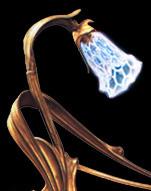 | | |
|  | | |
| |
 | | |
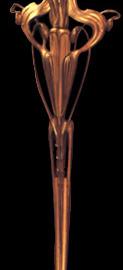 | | |
| |
| ART NOUVEAU | | |
| |
| - “Art Nouveau” is one of the shortest and in the same time one of the most creative and productive tendencies in history of art. The major works were realised in a laps of about twelve years, from 1893 to 1905.
- Like every significant artistic mouvement,”Art Nouveau” is grown out of the necessity, even out of the urgency to continously requestion and redefine oneself as a human beeing, facing the constant and ceaseless flow of changes and disruptions of history.
- The most significant revolution of the 19th century was certainly the industrial revolution. Technology, rationalism, cartesianism, termes that don’t easily match with artistic liberty and creativity, nevertheless “Art Nouveau” can be considered as the first significant attempt to reconcile artistic aspiration and the new phenomena of the industrialization, unlike other mouvements, confronted to a period of collapse of ancient values, hide behind metaphysical theories. The claimed intention of “Art Nouveau” was to break with historically established art, to find a completely new identity accordingly to the progressing technology. “Art Nouveau”, as an “art appliqué” (applied art) indicated his intention to endow to the fonctional object an esthetic and spiritual dimension, and over all to abolish the traditional separation between structure and ornament, for to confer to the object an idea of unity.
- The short creative period of “Art Nouveau” may be explained by the fact, that this mouvement imposed itself with such a huge creative energy upon the cultural scene. A such a accumulation of energy didn’t give up much time to reflexion and to unification of ideas to strengthen the foundations necessary to the continuity of an artistic impulse.
- It has to be understood that “Art Nouveau” is born out of the necessity to catch up again with the social and cultural changes that rushed through the 19th century and which the artistic evolution had missed. The intention of the artists to break the bonds with the models of the past and to catch up with the construction of the Modern Times was urgent, and so it could be observed in various places throughout the world mouvements emerging, that despite their same intention developed very different concepts to express themselfs. Even in one specific school, completely different concepts could coexist.
| | |
| 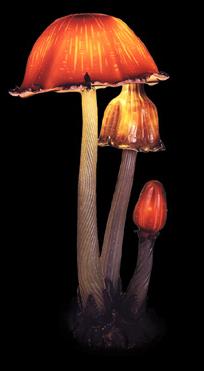 | |
|  | | |
| |
| |
| Citys like Nancy, Brussels, Glasgow, Barcelona, Munich, Darmstadt, Weimar and Vienna were within the most important creative poles of the mouvement. It is interesting to observe, that “Art Nouveau” didn’t grow out of the major cultural citys of that time, but rather out of smaller towns that didn’t play any important cultural role until then. | | |
| |
| In Nancy it was Emile Gallé (1846-1904) the initiator and the master of the mouvement. In the same time ceramist, master glazier and cabinetmaker, he imbued his work, his life long, with his passion for botanics and nature. Achieved a great reputation, he founded in 1901, with his collaborators Auguste Daum (1864-1930), Louis Majorelle (1859-1926) and Eugène Vallin (1856-1922), the “Ecole de Nancy” also called “Alliance provinciale des Industries de l’Art” (Provincial union of the Industries of Art) to promote the local manufacturing. | | |
| 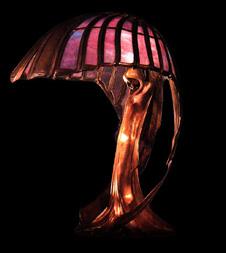 | | |
| |
| Glasgow of that time was a town in full industrial expansion and not much inclined to any artistic sensitivity. Nevertheless this town located at the periphery of Europe had, through the personality of Charles Rennie Mackintosh (1868-1928), his representant of “Art Nouveau”. Mackintosh and his collaborators, his wife Margaret Macdonald (1865-1933), her sister Frances (1874-1921) and her husband Herbert Mac Nair (1868-1928), were the four of them the representatives of the “School of Glasgow”. His hole life Mackintosh stood faithful to Glasgow, but never obtained the same dedication in his hometown with which the rest of Europe honored him. | | |
| |
| |
| - The two outstanding personalitys of Brussels of that time were Victor Horta (1861-1947) and Henry van de Velde (1863-1957). Brussels, especially throughout the work of Victor Horta, can have pride in itself to have one of the richest architectural “Art Nouveau” patrimony of Europe.
- If the work of Horta reflects, through his work with steel and also through the ornamental richness of his Interiors, the influence of the french school, Henry van de Velde on the other hand was conditioned by the work of the english painter, writer and political theorist William Morris (1834-1896). Too doctrinarian for the taste of the Belgian, it is in Germany that van de Velde found his work honored.
| | |
| |
| The personality of Antoni Gaudi (1852-1926) marked by himself the town of Barcelona throughout famous works like the inachieved church of “La Sagrada Familia” or the parc of “Güell”. Enjoying a great artistic independency due to generous sponsorship of important catalonian personalitys, Gaudi developed a very personal and daring style, provocing at that time a lot of controversy, but he knew also to integrate into his work characteristics with which his catalonian public could identify. As a symbol of the catalonian mouvement for national independency, he enjoyed great respect and popularity in Catalonia, the end of his life was nevertheless marked by a total social isolation. | |
| 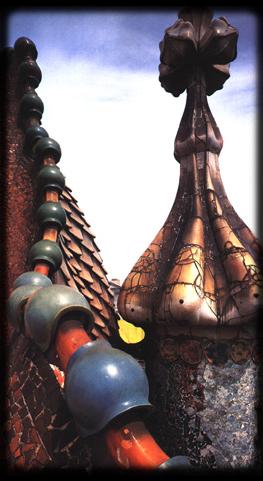 | | |
| |
| The german towns that had an importance upon “Art Nouveau” were first of all Munich, Darmstadt and Weimar. Called “Jugendstil” it was in Munich that the mouvement started throughout the personalitys of Hermann Obrist (1862-1927)), Bernhard Pankok (1872-1943), Richard Riemerschmied (1868-1957) and Bruno Paul (1874-1968). In 1897 are founded, still in Munich, the “Vereinigte Werkstätte für Kunst und Handwerk” (United workshops for art and handcraft). | | |
| |
| - Contrarely to Munich and other important centers of the mouvement, in Darmstadt and Weimar it was the political leaders the initiator of the mouvement, respectively the grand duke of Hessen, Ernst-Ludwig and the grand duke of Türingen Karl-Alexander.
- Ernst-Ludwig organized in 1901 in Darmstadt the exposition called “Ein Dokument deutscher Kunst” (A document of german art). Two artists were promoted trough this happening. Joseph Maria Olbrich (1867-1908) who came already to fame in Vienna but whos ideas did not correspond to the mentality of the town. In Darmstadt he was immediatly adopted and there he realised the major part of his work. For the Hamburg-born Peter Behrens (1868-1940) the exposition of Darmstadt was the starting-point for a country-wide career.
| |
| |
| |
| Weimar aspiring also for progress and modernity, invited the Belgian Henry van de Velde whos reputation wasn’t to make anymore. The town of Goehte and Schiller hoped of course, through such a personality, to promote her local craft and so to stimulate the economics of the town. | | |
| |
| Vienna made in “Art Nouveau” figure of exception, because being one of Europs first political and cultural capitals then, it didn’t had his reputation to make. The mouvement, marked through personalities such as Otto Wagner (1841-1918), Otto Loos (1870-1933) and Josef Hoffmann (1870-1956), wasn’t felt there like a revolution, but like a part of the continuity of a capitals evolution toward modern times. | | 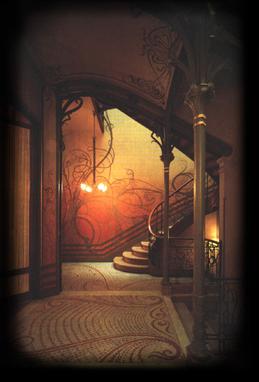 | | |
| |
| With one foot in the past and the other foot in the futur, “Art Nouveau” scattered with antagonisms and build out of contradictions did surely not aspire to be a school of style, but to be the reflection of a period of fondamental changes. Violent, passioned, juvenil, it let it up to its cultural descendants to deepen, to purify and to bring up to maturity this heritage. At the beginning of a new millenium where our culture sees itself one more time in history confronted to fondamental changes in its structures, it’s maybe not a coincidence that “Art Nouveau” attracts again its fascination on us. As a cultural mouvement of a pivotal period it can, for us also, be a source of inspiration facing the challenge of the futur. | | |
 | | | |
| |
|  | |  | | |
| |
|  | | |
| |
 |  |  |  |  |  |  |  |  |  |  |  |  |  |  |  |  |  |  |  |  |  |  |  |  |  |  |  |  |  |  |  |  |  |